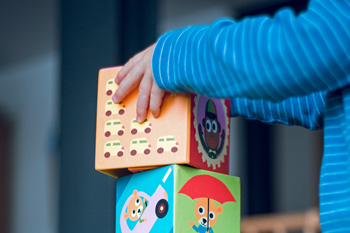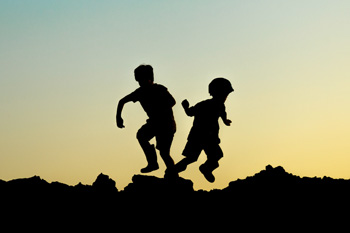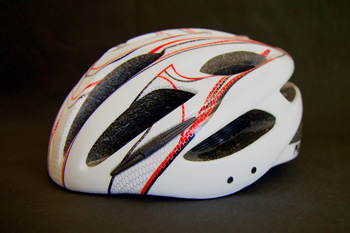Child Safety
- Get Prepared
- General Safety
- Current: Child Safety
Each year, 3.5 million American children receive emergency care for injuries that occurred in the home. It can be difficult to balance protecting children and providing fun childhood experiences. Taking the time to discuss safety and taking a few extra precautions will help ensure children will have the opportunity to make memories that will last a lifetime.
Child Safety Tips
Quick Tips
- Report any suspicious strangers or vehicles in the neighborhood to the police.
- Advise children to never answer doors without adult supervision.
- Regularly supervise children playing outside alone to help make sure an accident or emergency does not occur.
- To prevent drowning, children should wear a life jacket when swimming or boating.
- Children should always wear a helmet when bicycling, skateboarding, roller skating or riding a scooter.

At Home
More than one-third of injuries in children age 14 and younger occur in the home. Following a few safety tips can help prevent accidents or allow help to arrive more quickly.
- Teach kids when and how to dial 911.
- Children should know their parents’ names, phone number(s) and address(es). This information helps emergency personnel respond to situations more efficiently.
- Discuss household emergency and escape plans with children. Emergencies can occur at any time, so practice the plans during various times of the day.
- Report any suspicious strangers or vehicles in the neighborhood to the police.
- Advise children to never answer doors without adult supervision.
- Children should be at least 3 feet away from the stove when it is being used. Handles of cooking equipment should be kept turned sideways to prevent children from pulling on them.
- Sharp and fragile decorations should be kept out of children’s reach to prevent injuries.
- Store prescriptions and medicines in high cabinets that are out of reach of children.
- Before allowing children to leave the home on their own, know where they are going and whom they are spending time with. Choose a time they need to return home.

Outdoors
The National Safety Council reports that falls comprise 80% of playground injuries. Not every bruise or scratch can be prevented, but the following safety tips will help keep children safe when they are playing outdoors.
- When crossing a street, always look both ways before walking into the roadway.
- Look for kids playing near the street and slow down. Children are often unpredictable and unaware of danger around them. Never assume a child will stop to check for traffic or will yield the right of way.
- Regularly supervise children playing outside alone to help make sure an accident or emergency does not occur. Take turns with other parents in the neighborhood or enlist a trustworthy family member to help with supervision.
- Children should ride bikes, rollerblades or skateboards with a group of friends. If an emergency occurs, one child can contact help.
- Always wear a helmet when biking, skateboarding, roller skating or riding a scooter. The helmet will help protect against head injuries.
- Supervise young children at all times around fall hazards, such as stairs and playground equipment, whether at home or out to play.
- To prevent drowning, children should wear a life jacket when swimming or boating, always swim with adult supervision and take regular breaks to avoid becoming overly tired.

Bicycle Helmets
Helmets are the most effective safety device available for bicycle accidents, and properly wearing a bicycle helmet greatly reduces the odds of severe head injuries. Learn how to make sure a child's helmet fits and is worn correctly.
- When buying a helmet, let children pick out their own; they will be more likely to wear them for every ride.
- Make sure the bottom of the helmet is only one or two finger widths above the eyebrows.
- The helmet should be level and low on the forehead (not tilted).
- Check that the helmet does not rock back and forth or side to side more than an inch.
